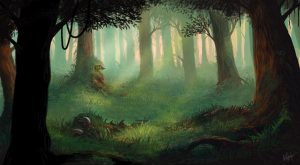Mời các bạn làm bài tập ôn luyện dạng bài Flow-chart completion trong IELTS Reading. Bài tập này giúp các bạn ôn lại kỹ năng xử lý dạng bài Flow-chart completion cũng như củng cố lượng từ vựng. Bài có tất cả 4 câu hỏi điền từ. Sau khi làm xong bài, các bạn hãy ấn submit để xem kết quả bài làm của mình và giải thích của từng câu hỏi. Bạn hãy thử làm để củng cố và nâng cao kiến thức để chuẩn bị cho bài thi IELTS Reading nhé!
Chúc bạn có thời gian hữu ích trên website!
The Forgotten Forest

Found only in the Deep South of America, longleaf pine woodlands have dwindled to about 3 percent of their former range, but new efforts are under way to restore them.
THE BEAUTY AND THE BIODIVERSITY of the longleaf pine forest are well-kept secrets, even in its native South. Yet it is among the richest ecosystems in North America, rivaling tallgrass prairies and the ancient forests of the Pacific Northwest in the number of species it shelters. And like those two other disappearing wildlife habitats, longleaf is also critically endangered.
In longleaf pine forests, trees grow widely scattered, creating an open, parklike environment, more like a savanna than a forest. The trees are not so dense as to block the sun. This openness creates a forest floor that is among the most diverse in the world, where plants such as many-flowered grass pinks, trumpet pitcher plants, Venus flytraps, lavender ladies and pineland bog-buttons grow. As many as 50 different species of wildflowers, shrubs, grasses and ferns have been cataloged in just a single square meter.
Once, nearly 92 million acres of longleaf forest flourished from Virginia to Texas, the only place in the world where it is found. By the turn of the 2lst century, however, virtually all of it had been logged, paved or farmed into oblivion. Only about 3 percent of the original range still supports longleaf forest, and only about 10,000 acres of that is uncut old-growth—the rest is forest that has regrown after cutting. An estimated 100,000 of those acres are still vanishing every year. However, a quiet movement to reverse this trend is rippling across the region. Governments, private organisations (including NWF) and individual conservationists are looking for ways to protect and preserve the remaining longleaf and to plant new forests for future generations.
Figuring out how to bring back the piney woods also will allow biologists to help the plants and animals that depend on this habitat. Nearly two-thirds of the declining, threatened or endangered species in the southeastern United States are associated with longleaf. The outright destruction of longleaf is only part of their story, says Mark Danaher, the biologist for South Carolina’s Francis Marion National Forest. He says the demise of these animals and plants also is tied to a lack of fire, which once swept through the southern forests on a regular basis. “Fire is absolutely critical for this ecosystem and for the species that depend on it,” says Danaher.
Name just about any species that occurs in longleaf and you can find a connection to fire. Bachman’s sparrow is a secretive bird with a beautiful song that echoes across the longleaf flatwoods. It tucks its nest on the ground beneath clumps of wiregrass and little bluestem in the open under-story. But once fire has been absent for several years, and a tangle of shrubs starts to grow, the sparrows disappear. Gopher tortoises, the only native land tortoises east of the Mississippi, are also abundant in longleaf. A keystone species for these forests, its burrows provide homes and safety to more than 300 species of vertebrates and invertebrates ranging from eastern diamond-back rattlesnakes to gopher frogs. If fire is suppressed, however, the tortoises are choked out. “If we lose fire,” says Bob Mitchell, an ecologist at the Jones Center, “we lose wildlife.”
Without fire, we also lose longleaf. Fire knocks back the oaks and other hardwoods that can grow up to overwhelm longleaf forests. “They are fire forests,” Mitchell says. “They evolved in the lightning capital of the eastern United States.” And it wasn’t only lightning strikes that set the forest aflame. “Native Americans also lit fires to keep the forest open,” Mitchell says. “So did the early pioneers. They helped create the longleaf pine forests that we know today.”
Fire also changes how nutrients flow throughout longleaf ecosystems, in ways we are just beginning to understand. For example, researchers have discovered that frequent fires provide extra calcium, which is critical for egg production, to endangered red-cockaded woodpeckers. Frances James, a retired avian ecologist from Florida State University, has studied these small black-and-white birds for more than two decades in Florida’s sprawling Apalachicola National Forest. When she realised female woodpeckers laid larger clutches in the first breeding season after their territories were burned, she and her colleagues went searching for answers. “We learned calcium is stashed away in woody shrubs when the forest is not burned,” James says. “But when there is a fire, a pulse of calcium moves down into the soil and up into the longleaf.” Eventually, this calcium makes its way up the food chain to a tree-dwelling species of ant, which is the red-cockaded’s favorite food. The result: more calcium for the birds, which leads to more eggs, more young and more woodpeckers.
Today, fire is used as a vital management tool for preserving both longleaf and its wildlife. Most of these fires are prescribed burns, deliberately set with a drip torch. Although the public often opposes any type of fire—and the smoke that goes with it—these frequent, low-intensity burns reduce the risk of catastrophic conflagrations. “Forests are going to burn,” says Amadou Diop, NWF’s southern forests restoration manager. “It’s just a question of when. With prescribed burns, we can pick the time and the place.”
Diop is spearheading a new NWF effort to restore longleaf. “It’s a species we need to go back to,” he says. Educating landowners about the advantages of growing longleaf is part of the program, he adds, which will soon be under way in nine southern states. “Right now, most longleaf is on public land,” says Jerry McCollum, president of the Georgia Wildlife Federation. “Private land is where we need to work,” he adds, pointing out that more than 90 percent of the acreage within the historic range of longleaf falls under this category.
Interest among private landowners is growing throughout the South, but restoring longleaf is not an easy task. The herbaceous layer—the understory of wiregrasses and other plants – also needs to be re-created. In areas where the land has not been chewed up by farming, but converted to loblolly or slash pine plantations, the seed bank of the longleaf forest usually remains viable beneath the soil. In time, this original vegetation can be coaxed back. Where agriculture has destroyed the seeds, however, wiregrass must be replanted. Right now, the expense is pro-hibitive, but researchers are searching for low-cost solutions.
Bringing back longleaf is not for the short-sighted, however. Few of us will be alive when the pines being planted today become mature forests in 70 to 80 years. But that is not stopping longleaf enthusiasts. “Today, it’s getting hard to find longleaf seedlings to buy,” one of the private landowners says. “Everyone wants them. Longleaf is in a resurgence.”
Questions 1-4
Complete the flow-chart below.
Choose ONE WORD ONLY from the passage for each answer. Write your answers in boxes 1-4 on your answer sheet.
How to increase the number of cockaded woodpeckers
Calcium stored in 1………………………..
Shrubs are burned
Calcium released into 2 ……………….and travels up to the leaves
a kind of 3………………….eats the leaves
Red-cockaded woodpeckers eat those ants
The number of 4……………….increases
More cockaded woodpeckers
 IELTS Max Luyện thi IELTS cam kết đầu ra
IELTS Max Luyện thi IELTS cam kết đầu ra




